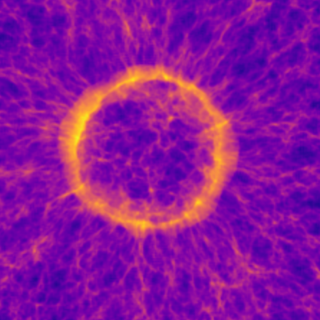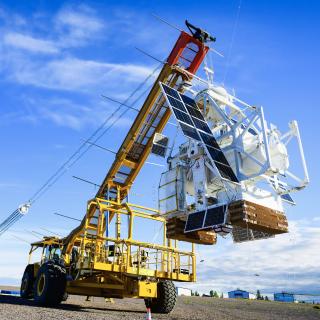This planetary nebula was recently discovered by an international team of astronomers at the Roque de los Muchachos Observatory, on the island of La Palma.
The Instituto de Astrofísica de Canarias (IAC) has decided that the new planetary nebula recently discovered with a telescope in the Canary Islands be named “Príncipes de Asturias,” due to the recent wedding between Mr. Felipe, Honorary Astrophysicist of the IAC, and Mrs. Letizia. The proposal was unanimously agreed upon by the group of astronomers involved in the discovery of the new astronomical object, and will be captured in a sculpture by the artist Gotzon Cañada.
This nebula, with the scientific name PNG 126.62 + 1.32, was discovered at 0 hours 57 minutes (UT) of October 13th 2003 with the “Isaac Newton” Telescope, as part of the deep exploration of the galactic plane that is being carried out by IPHAS (INT photometric H-alpha survey), headed by the researcher Janet Drew, of the Imperial College in London. Eleven institutes worldwide (United Kingdom, Netherlands, United States and Australia), besides the IAC, are involved in this study. To be specific, the observation of this object was coordinated by astrophysicists Antonio Mampaso, of the IAC, and Romano Corradi, of the Isaac Newton Group of Telescopes (ING).
After several months of data analysis, the new astronomical object has been categorized as a “quadrupole” planetary nebula. The scientific importance of this type of nebula resides, not only in its peculiar morphology, but also in its scarcity in the Universe. In fact, only six of these nebulae are known.
In an article published in 1785, astronomer William Herschel, author of famous catalogues of nebulae and stellar clusters, classified, separately, a kind of nebulae that seemed observationally different from the rest. He called them “planetary nebulae” because they vaguely reminded him of a greenish planetary disk. However, they are not planets, nor young nebulae condensing to become a star, as was thought in the beginning. Now we know that solar-type stars, towards the end of their life, let go of their external layers that slowly expand and dilute into interstellar space. These nebulae shine when illuminated by the central star, while the nucleus of the star continues to evolve until it becomes a white dwarf. Basically, and despite the erred original name, a planetary nebula is the last phase of a star, and it will be the last stage of the sun, in about 4500 million years.
The confirmation that PNG 126.62 + 1.32 was a planetary nebula was obtained with the spectra taken with the “William Herschel” Telescope, on February 1st 2004. this telescope, as well as the “Isaac Newton” Telescope, with a 2.5 m diameter, belonging to the ING, are installed at the Roque de los Muchachos Observatory, of the IAC, in the municipality of Garafía, La Palma.


